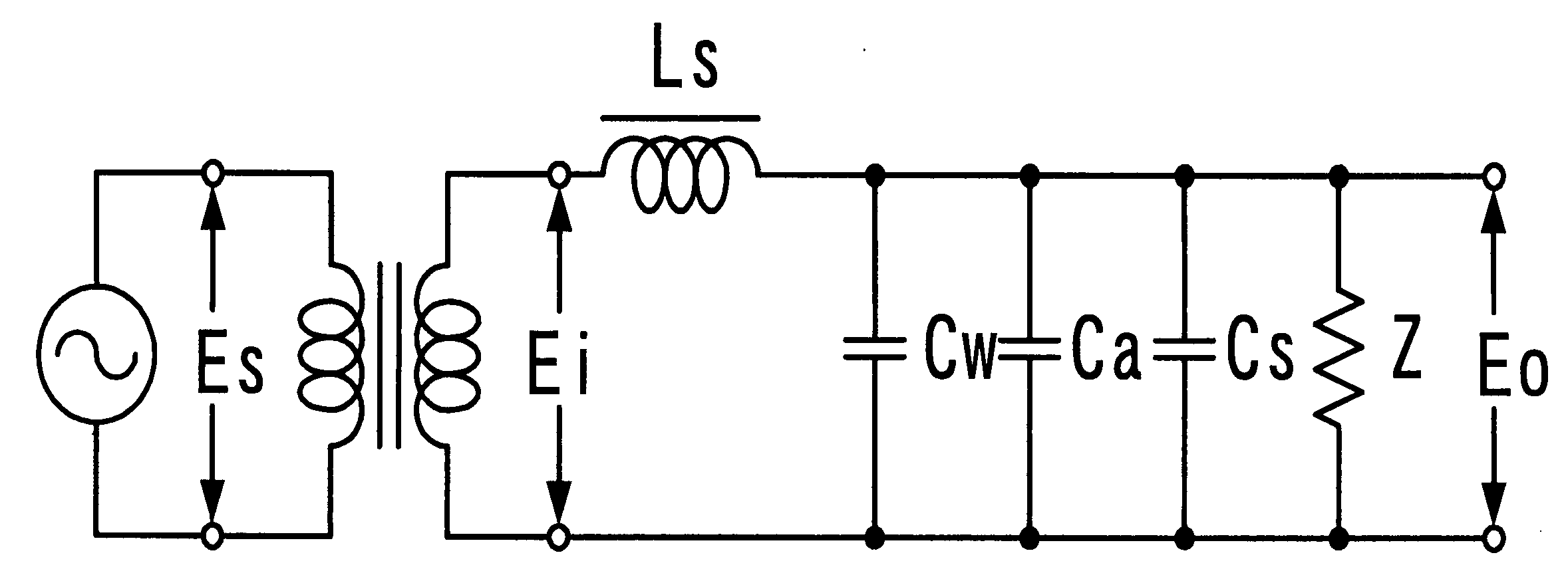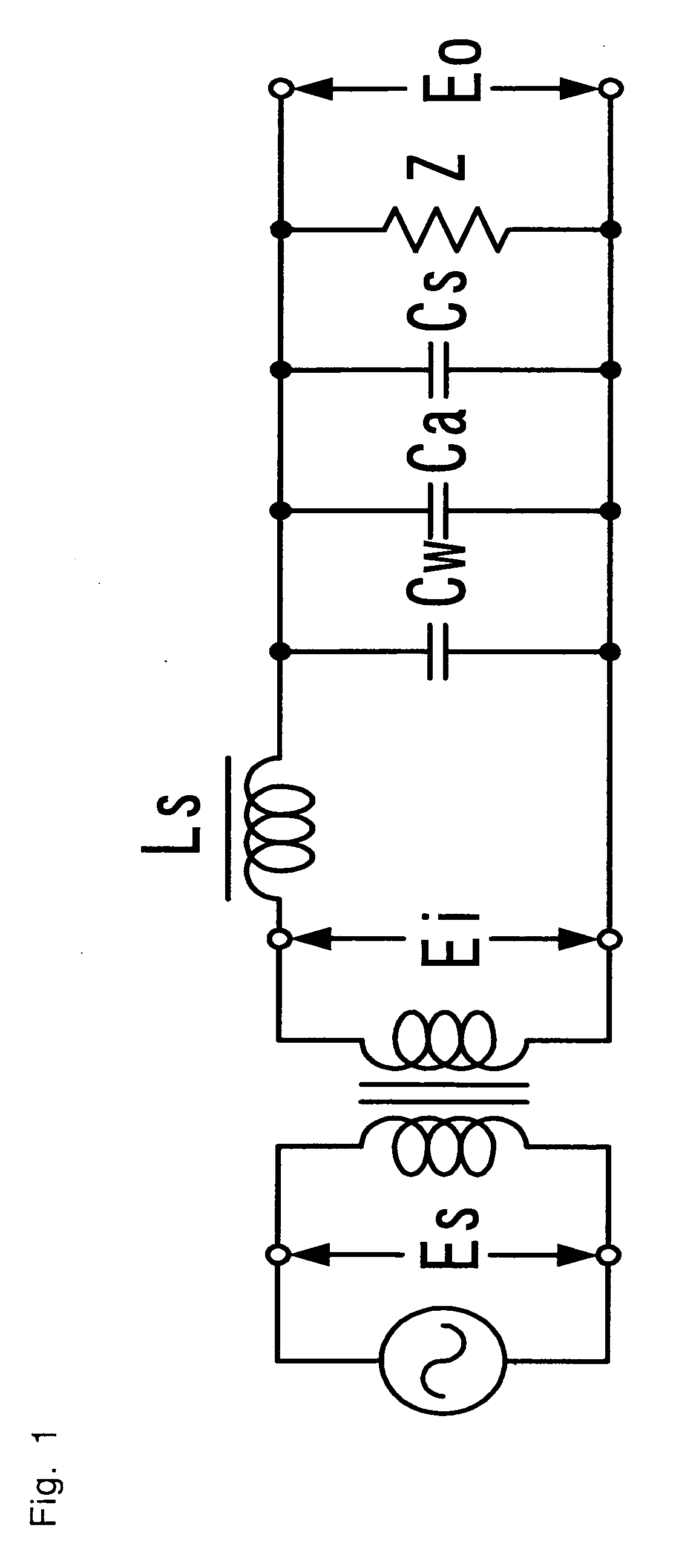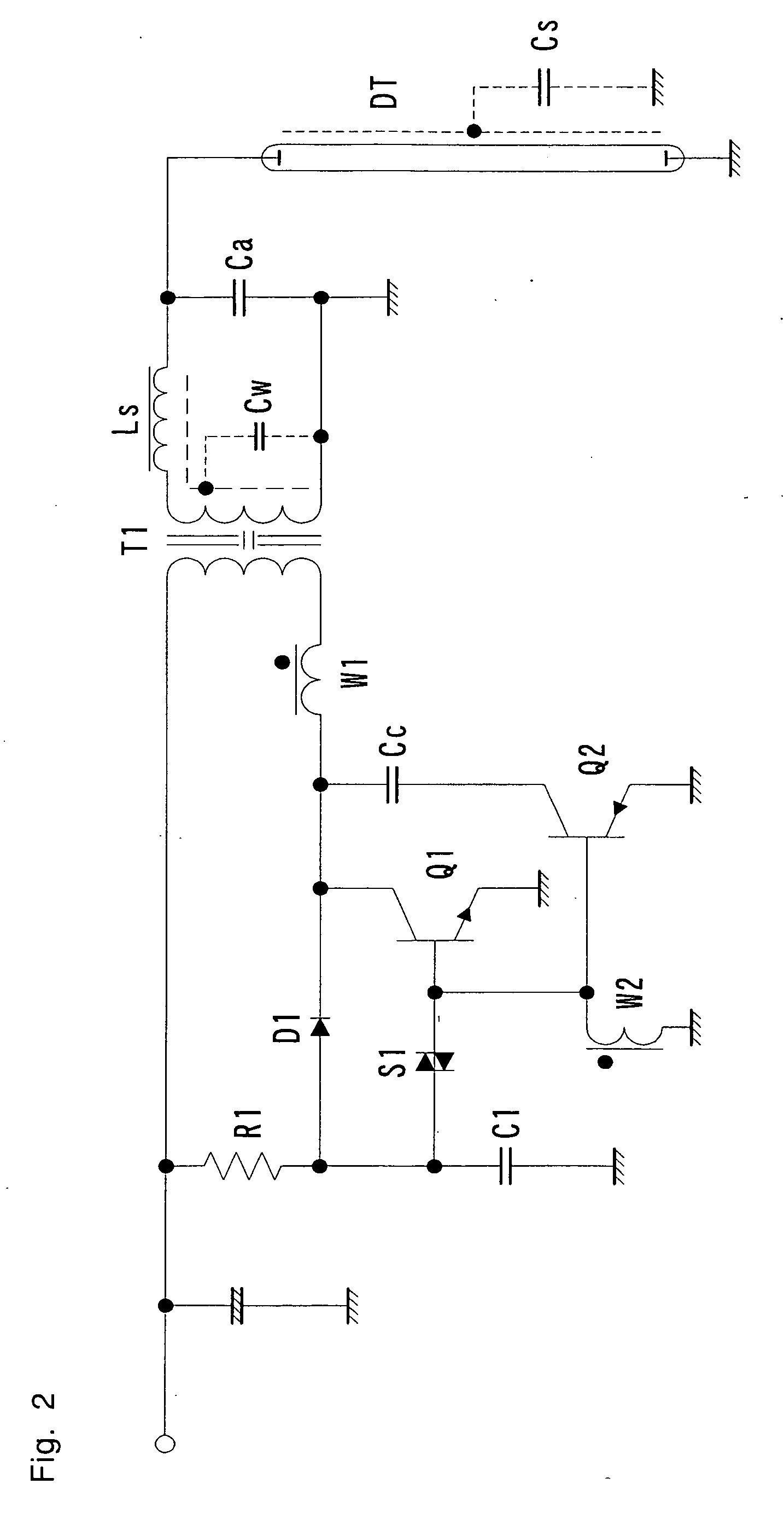Current-mode resonant inverter circuit
a resonant inverter and current mode technology, applied in the direction of dc-ac conversion without reversal, process and machine control, instruments, etc., can solve the problems of large leakage inductance of the step-up transformer in the inverter circuit, and the technical terms are not the same, so as to achieve easy illumination
- Summary
- Abstract
- Description
- Claims
- Application Information
AI Technical Summary
Benefits of technology
Problems solved by technology
Method used
Image
Examples
Embodiment Construction
[0129] First, the resonant circuit in the present invention method the one shown in FIG. 1 or the step-up transformer in which the leakage inductance is replaced with a choking coil. In FIG. 1, capacitive components Cw, Ca and Cs in the secondary side circuit are combined so as to make the resonance capacitance and to compose the secondary side resonant circuit of the step-up transformer together with the leakage inductance Ls. In this case, the reference character Z denotes the impedance of a discharge lamp. In this case, the equation Ei=Es·k·N2 / N1 is true, in which k means coupling coefficient, and N1, N2 mean the number of turns of the transformer primary and secondary windings.
[0130] The oscillation frequency of the inverter circuit is determined by the resonance frequency of the secondary circuit. If the resonance frequency is set to fr: fr=12 πLs·(CW+Ca+Cs)
[0131] The oscillation frequency of the current-mode resonant circuit in the present invention becomes the above freq...
PUM
 Login to View More
Login to View More Abstract
Description
Claims
Application Information
 Login to View More
Login to View More - R&D
- Intellectual Property
- Life Sciences
- Materials
- Tech Scout
- Unparalleled Data Quality
- Higher Quality Content
- 60% Fewer Hallucinations
Browse by: Latest US Patents, China's latest patents, Technical Efficacy Thesaurus, Application Domain, Technology Topic, Popular Technical Reports.
© 2025 PatSnap. All rights reserved.Legal|Privacy policy|Modern Slavery Act Transparency Statement|Sitemap|About US| Contact US: help@patsnap.com



